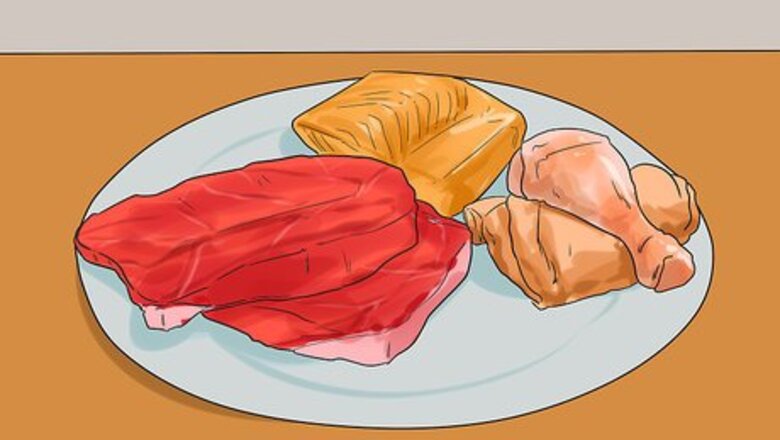
views
Making Your Own Chihuahua Food

Make meat the primary ingredient. Making your Chihuahua’s food yourself is the best way to ensure they are getting food that is free of chemical preservatives, fillers, coloring, and animal by-products. Meat should be the most prominent ingredient in your Chihuahua’s food. The best meats to include are lean ones like chicken and hamburger, as well as fish. You can also include organs like liver, kidney, and brain. However, first discuss this with your veterinarian and your butcher. You need to be clear about the source of the meat, as well as what else you are feeding your dog. Your vet can help ensure your dog is eating a well-balanced diet.
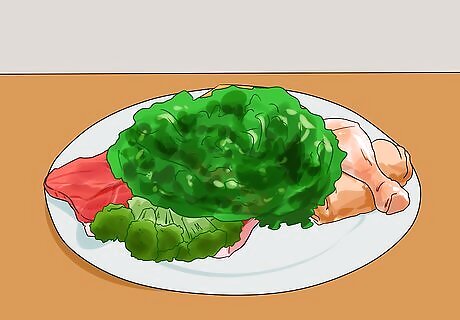
Add vegetables and starch. Round out your Chihuahua’s meals with vegetables and starches. Each should comprise approximately 30 percent of your dog’s diet. Vegetables can include spinach, carrots, broccoli, and zucchini. Fruits like blueberries, raspberries, and apples (without the core) provide vitamins and anti-oxidants. Also incorporate carbohydrates like rice (brown or white) and pasta in small portions. Make sure that they are completely cool before you add them to your dog's bowl, as they could burn your pup. Stay away from corn, onions, raisins, grapes, avocado, macadamia nuts, and coffee as these can all be very detrimental to your Chihuahua’s health.
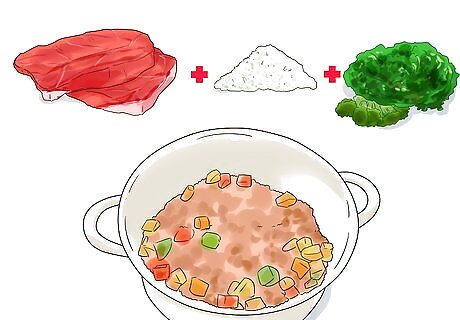
Create a stew. One of the most popular methods for cooking your Chihuahua’s food is to make it into a stew. This is a simple way to create a meal that is nutritious and easy for your dog to digest. While specific recipes may vary, you will generally boil the meats for this stew. Next, add rice to the boiling water for it to cook. Finally, stir in your vegetables at the end. If you don’t want to cook for your Chihuahua every day, you can make a surplus of their food and refrigerate or freeze it until you need it.
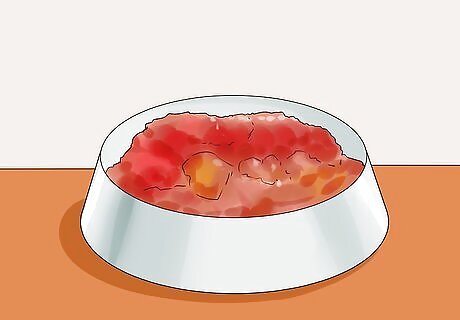
Make a raw food mixture. Some nutrients in food are lost during preparation, so many people like making a raw food mixture for their Chihuahua as well. Dogs’ bodies are equipped to process raw foods so this is also a safe, healthy option for your pet. You will want to keep in mind the same ratio of proteins, vegetables, and starches mentioned above. Ensure the ingredients you are using are fresh and clean. You can also make larger quantities of your raw food mixture and freeze some for later meals. There are some risks with serving your dog raw food, like salmonella, so check with your veterinarian before you include raw foods in your Chihuahua’s diet.
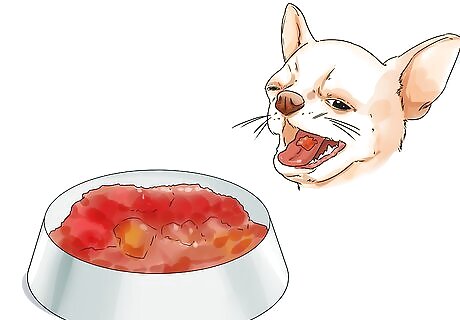
Include only small pieces of food. Keep in mind that your Chihuahua is small, and therefore, can only digest small pieces of food. Ensure any meats you serve them are minced or very finely chopped. Also be sure to finely chop or grate any vegetables you add. You can also puree your dog’s food. Chihuahuas can be finicky eaters so there may be a lot of trial and error when making homemade food for your dog. Try different methods and stick with whichever method your dog enjoys most.
Selecting the Right Commercial Food
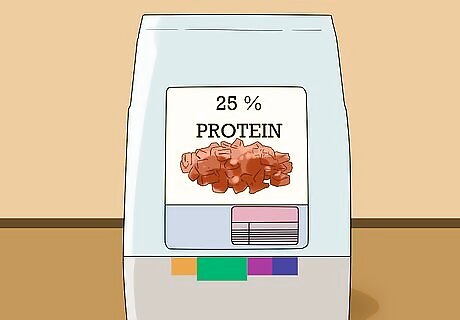
Look for at least 25 percent protein. If making your Chihuahua homemade meals is not a feasible option, you can still find a healthy manufactured food. Protein from meat should be the number one ingredient in your Chihuahua’s diet, so look for one in which ingredients like chicken, lamb, beef, or fish are listed first on the nutrition label. Dog food companies are required to list ingredients in descending order, so this will ensure meat is the main ingredient. Meat meals are also acceptable as the main ingredient as they are a concentrated form of meat. Stay away from any products that contain “digest” or animal by-products.

Look for named fats. Your Chihuahua also needs fat in their diet. But they need to be good sources of fat. Look for ingredients like chicken fat, fish oil, and omega-3 fatty acids on commercial dog food labels. If your food is low in these, you can top-dress your dog's dinner with them just before feeding.
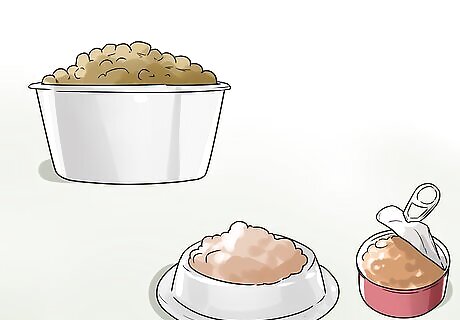
Choose dry kibble over wet food. If you decide to feed your dog a manufactured food, opt for kibble instead of wet food. Though your Chihuahua may prefer wet food, it can affect your dog’s bowels and cause runny bowel movements. Try drizzling some low-salt broth over your dog’s dry kibble if you’re having trouble getting them to eat their meal. If your dog is already eating wet food, plan to slowly switch them to dry kibble by mixing the wet and dry food. Begin with an 80/20 ratio of wet to dry food, making sure to cover the kibbles completely with the wet food. Add less and less wet food over an eight to ten day period until you end up with only dry kibble.
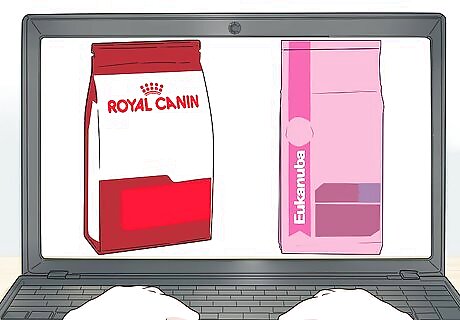
Research recommended brands. Not all dog foods are created equal. Some brands are more committed to producing high quality dog food than others. Some highly recommended commercial brands for Chihuahuas include Orijen and Whole Earth Farms. Royal Canin and Eukanuba each offer a line of Chihuahua-specific dog foods. In addition, many brands, including Wellness and Blue Buffalo, offer dog foods formulated especially for small breeds. Science Diet and Purina Pro Plan are two additional lines often recommended by veterinarians for their good balance, their proper ingredients, and the research involved in developing them to be as healthy as possible for your pet.
Following Correct Feeding Procedures
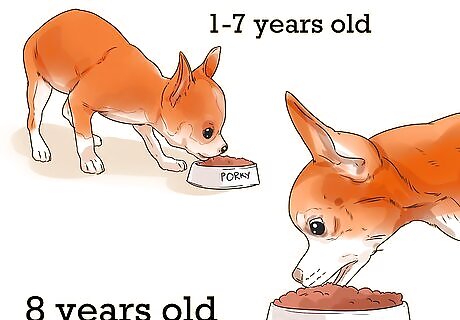
Feed them the right amount. The amount of food, or number of calories, your Chihuahua needs to eat in a day is dependent on its age and activity level. Your dog’s individual metabolism is also a factor, but since it is very difficult to determine, it is best to calculate the amount of food your dog should receive on the first two factors. Adult Chihuahuas (1 to 7 years old) that are healthy and exercise daily need approximately 35 to 40 calories per pound of body weight daily. Senior dogs (8 years and older), which likely have some health issues, need roughly 30 calories per pound of body weight a day. You should use a Body Condition Score to help judge your Chihuahua’s weight. You should be able to feel their ribs but not see them. Have your veterinarian help you learn how to use this technique to monitor your dog. Adjust your dog's food accordingly. For example, add more food if your dog is too thin.
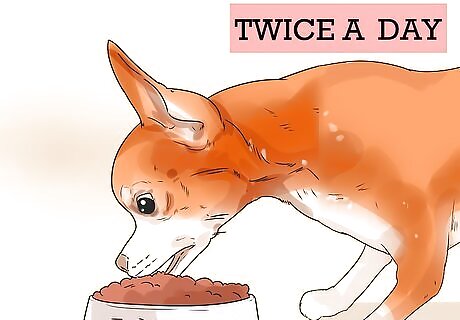
Feed them twice a day. Ideally, you want to feed your Chihuahua dog twice a day—once in the morning and once at night. You can adjust the exact times you feed your dog to create a schedule that works best for you as far as food and bathroom trips. For instance, the timing of their evening meal will affect when you dog needs to use the bathroom the next morning. You can also choose to feed your Chihuahua only once a day, feeding them one meal at dinner time. However, this breed does best when they are fed twice a day. Measure out your dog's food rather than just just using the scoop included with the container. You need to know exactly how much food your dog needs for its weight and ensure that it gets this amount. This will help keep your pup healthy.
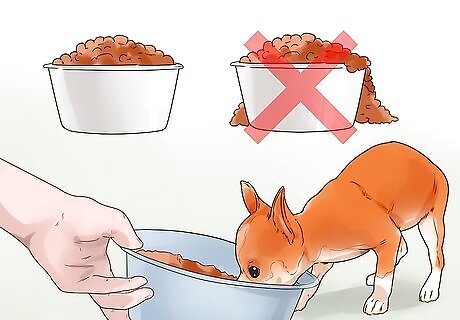
Give snacks sparingly. Generally, adult Chihuahuas should only be given snacks in limited amounts, and occasionally. It is best to use them to reinforce good behavior. When looking for a manufactured snack, stay away from brightly-colored ones. Rawhides are also known to cause severe digestive problems. For homemade treats, offer baby carrots, blueberries, and raspberries. You can also give them plain white yogurt (regular, not low-fat) or mix some fruit in with the yogurt.


















Comments
0 comment